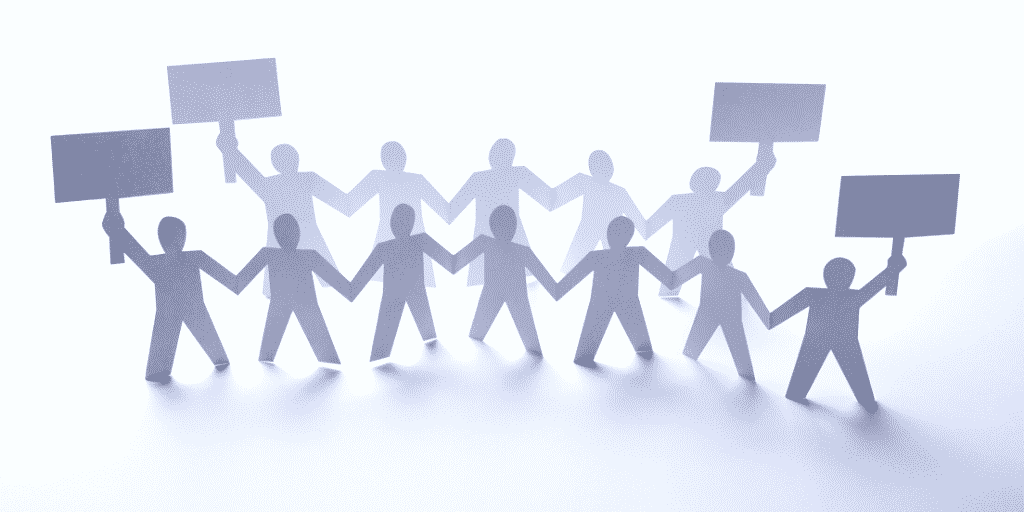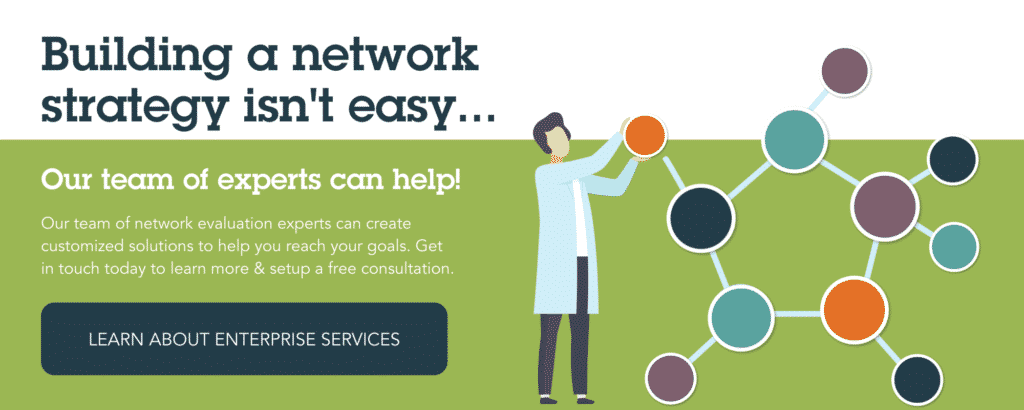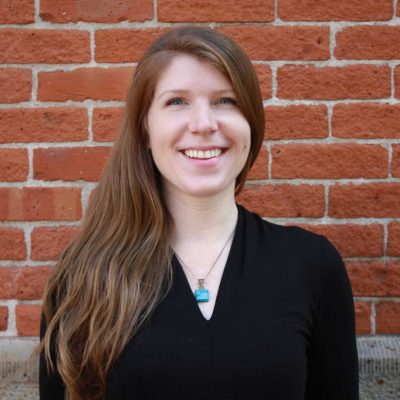Collective Impact is Hard, But We’re Not In the Dark: Advice for Policy Change

Collective impact is hard. If you’ve ever done it, you know it beyond a doubt. If you’ve never done it, just read about the five conditions of collective impact and you’ll be able to guess how hard it would be to make it all work. Entire communities have formed around tackling the complexities that we face when trying to achieve collective impact. For this reason, I’ll repeat: collective impact is hard. But we all know the kinds of problems we’re facing today require everyone to pitch in if we’re going to solve them. The good news? We’re not completely in the dark here.
My own journey with collective impact started in Spokane, Washington in 2012. I was working in the Data Center of the Spokane Regional Health District, an incredibly innovative local health jurisdiction, when collective impact swept over the city. It seemed like one night I went to sleep and everyone was thinking about coalitions, then I woke up and the whole city was talking about collective impact. Soon enough I was serving as Data Manager for Excelerate Success, an education-focused collective impact partnership and a member of the StriveTogether network. And boy, was it hard. But I was hooked! I saw value in the network way of working and saw people and partnerships across the nation working tirelessly to figure out how to do it right. The complexity of it made me realize I needed to learn more, so I went back to school. I guess this means collective impact’s what brought me to the University of Colorado Denver’s School of Public Affairs PhD program to learn about how organizations work across sectors to achieve common goals. Here’s some of the most helpful stuff I’ve learned so far:
Collective impact isn’t (exactly) a new way of working.
Collective impact is often framed as a new way of working, but this isn’t completely true. I can’t tell you how many times I attended a collective impact conference and heard something like “This is all new and unknown, but we’re in this together and we’re working hard to figure it out!” One thing I’ve learned so far is that this is only sort of true. The second part – about dedicated folks working incredibly hard to figure out how to achieve collective outcomes – is undoubtedly right. But the first part? Eh, that’s debatable, which is great news for us! It means we can learn from similar things that have already been tried, tested, and perfected. There are three areas of existing knowledge that I’ve found to be super helpful in how I think about collective impact: collaboration, measurement, and policy change. This blog post focuses on the last of these areas, policy change.
Understand how policy change works and how you fit into the cycle
Even though I’ve always been fascinated by policy, I’ve been equally intimidated by it. My first foray into public health was as a Policy and Procedure Development Specialist at a local health jurisdiction in Montana. My job was to work with administration and staff to write up existing rules and ways of doing things and to develop new guidelines for how things ‘should be done.’ This experience helped me understand several basic things about policy development and policy change: 1) it sometimes takes a lot of work to get people thinking outside the bounds of doing things one way because that’s the way they’ve ‘always been done,’ 2) policies are interconnected; a policy made in one division can affect policies in many other divisions, and 3) people will only follow policies if they understand them and feel they had a say in how the policy was developed. After studying the policy process in a broader context, it’s surprising to see how much of what I learned working at the organization-level applies at different levels of policy making and implementation. Building off this basic understanding to broaden my conception of what public policies are and what policy change means has been incredibly helpful for demystifying working at the policy level beyond an individual organization context. The rest of this post focuses on sharing some of the most important things I’ve learned from research on how to change public policy.
First, what is a policy? The Cambridge English Dictionary defines policy as “a set of ideas or a plan for action followed by a business, a government, a political party, or a group of people.” Pretty vague, right? I think of a policy as an agreed-upon way that things will be done (with teeth!). Policies have ‘teeth’ since they’re often attached to funding or other resources; failing to follow them can result in financial or legal repercussions. But these ‘teeth’ aren’t always so obvious: when we talk about systemic and institutional racism, public policies often have a role to play. Suspension policies in public schools and mandatory minimum sentencing are just two policies that have been clearly linked to reinforcing racial disparities. Policies can strip women of their ability to make personal health decisions, help keep people safe from gun violence, and make real advances toward preparing kids to succeed in school. This is important stuff, people. Understanding what policies are and how to change them are key ways to make the kind of broad sweeping change many collective impact initiatives seek.
Now that we’re on the same page about what we mean when we talk about policies and why they’re important, let’s dig into the role you can play in it all. I’m going to focus on two things here: 1) understanding the policy cycle, and 2) how you can influence the policy process.
The Policy Process

Policy process scholars use the policy cycle as one guide for understanding policy development and change. It’s broken into six phases: agenda setting, formulation, adoption, implementation, evaluation, support/maintenance. Understanding each of these phases and how they fit together is a good first step toward working at the policy level. I’m not going to get into academic specifics for each of these – there’s loads of research out there if you’re interested in digging into this stuff. Rather, I’m just going to say a few words about each stage while emphasizing the role you can play along the way.
- Agenda setting. The first step in the policy cycle is getting the policy issue on the public agenda. If the policy you want to change isn’t on people’s radar as something that’s important, change is unlikely. The first thing to think about here is whose agenda you need to be on. If you want to influence school district policies, you need to be talking to the school board. If you want to influence policies in your city, you’d better be showing up to city council meetings. We also know the media has a role to play in agenda setting. If the media’s talking about your policy idea, it has better odds of being given attention on the right agenda(s). Talk to journalists and send in press releases when appropriate. However you make it happen, make sure people know about your policy idea and that it’s showing up on the right agendas.
- Policy formulation. Now that your policy idea is on the agenda, you’ll need to start figuring what exactly you mean by ‘your policy idea.’ This is when you use all the information you gathered from needs assessments, stakeholder input processes like Voice of the Customer, and cost-benefit analyses to define things like who your policy will affect, how it will be financed, and how you envision it being carried out in practice.
- Policy adoption. There are three main pathways that lead to policies being successfully adopted.[i] The first is external events that bring attention to an issue and the need for policy change around this issue. When a news story breaks that’s related to your policy idea, use this momentum to garner support for the change you want to see. The second pathway is learning, which could happen through a formal research study, a community needs assessment, a community forum, a continuous improvement process, etc. If new information points to the need for a policy change, share this knowledge when garnering support. The third pathway to policy adoption is negotiation and cooperation. This is when you roll up your sleeves and sit down with people who have an interest in your policy idea to hash out what it would take for them to adopt the policy you’re proposing.
- Policy implementation varies widely depending on the type of policy being implemented. For some policies, implementation means designing a completely new program, while other policies may be more rule-based where implementation primarily involves educating employees. Regardless of the type of policy being implemented, it’s important to understand the implementation context. Jodi Sandfort and Stephanie Moulton provide guidance for how to do this in their book Effective Implementation in Practice: Integrating Public Policy and Management.[ii] Sandfort and Moulton describe the importance of understanding policy fields at various levels and understanding the relationships among these levels using policy field maps, which can help you think through the institutional, organizational, and individual factors at play when working to implement policies. Check out Jodi’s work for more guidance on policy implementation.
- This stage of the policy cycle happens after the policy has been implemented and has been in place for some time. Now it’s time to see how the policy worked. This can be done through policy impact analysis, program evaluation, or continuous improvement processes. The point here is to see how well the policy is doing what you wanted it to do. Is it having the intended effect? Are there unintended consequences? Is the policy sustainable?
- Support/maintenance. The final stage in the policy cycle builds off the evaluation stage. Once answers to the types of questions asked during evaluation have been answered, informed decisions can be made about whether it makes sense to continue with the policy in its current form, make changes to the policy, or end the policy altogether.
The policy cycle is just one guide for how to think about the policy process. Understanding where you’re at in the policy cycle can help you identify the best strategies for your current circumstances. This knowledge can also help you find the best resources available to assist with the policy stage you’re working to influence.
Influencing the Policy Process
Understanding the policy cycle is just a starting point for understanding the role you can play in changing policy. The next step is understanding what you can actually do to influence the policy process. The best guidance I’ve seen on this comes from Dr. Chris Weible and Dr. Tanya Heikkila, co-directors of the Workshop on Policy Process Research at the University of Colorado Denver in their article, “Understanding and influencing the policy process,”1 which was co-written with two champions in the field, Peter deLeon and Paul Sabatier (this article is behind a pay-wall – if you’d like to read the full version, send me an email and I’ll gladly share a copy with you). In this article, the authors describe three primary ways to influence the policy process:
- Understand the policy environment. The first step of influencing the policy process is to develop “deep knowledge” of the policy area in which you’re working. This involves four types of knowledge: belief system awareness, local knowledge, analytic knowledge, and knowledge of other policy environments. Understanding belief systems is an important step toward understanding how information will be interpreted, how to craft convincing arguments, and how to communicate/work with people who have different points of view. An understanding of local knowledge is also important since no amount of data or news coverage can provide the kind of insight that can be gleaned by meeting people on the ground who know the issues or places you’re trying to influence through policy. But that’s not to say data isn’t important; this kind of analytic knowledge can help prove your point or shine light on areas of need. Finally, understanding other policy environments can help identify areas of overlap and potential for engaging diverse stakeholders in your work.
- Build networks. If you’re involved in a collective impact initiative, you’re already doing this. You know that partnering with other people and organizations who share common goals is one way to harness the power of voice, knowledge, and resources needed to make amazing things happen in the world. Using your networks to help raise awareness of a policy issue, get your policy idea on the political agenda, or pool the resources needed to effectively implement a policy is one of the best ways we know to make policy change happen. One caution about the power of networks is groupthink. You’re probably familiar with this phenomenon, which happens when group consensus is valued over critical consideration of decisions. People go along with plans without stopping to think carefully about what the plan really means from a variety of angles. One of the best ways to avoid groupthink is by ensuring networks include diverse perspectives. But overall – even with the danger of groupthink – harnessing the power of intentionally connected and coordinated people/organizations is one of the surest ways to succeed in your efforts to change policy.
- Stay engaged for the long haul. It can take a long time to understand policy environments and to build meaningful relationships, so it naturally follows that one of the key factors in whether you’ll succeed in policy change is how long you stay involved in the cause. But beyond that, policy change takes time. Think back to the policy cycle – each one of those steps could easily take a year or more. The importance of timing and opportunity is also at play here. Sometimes the surest way to policy change is waiting for the right time to act, whether that be a relevant news story breaking, changes to funding structures, or changes in leadership. The point here is that patience is not just a virtue when it comes to policy change – it is in many respects a necessity.
Even after studying the policy process in two different master’s programs and now at the doctoral level, I still think it’s intimidating. There are so many moving pieces it can be hard to keep track of them all and since policy change operates at the political level, it can be really difficult to know what’s actually happening behind the scenes. Even more importantly, policies really, truly matter. They can enable people to live their best lives or turn their worst nightmares into reality. Working at the policy level has high stakes but the payoffs can be invaluable. Weible, Heikkila, deLeon, and Sabatier close their article by saying “There are no guarantees for influencing the policy process. The best individuals can do is to place themselves in a position to have a chance to make a difference, which includes developing the following strategies: (1) developing deep knowledge, (2) investing in networks, and (3) participating for long periods of time.” Understanding how policy change works and what you can do to influence the process are two small steps toward working at the policy level in your collective impact initiative. It’s hard, uncertain work, but it’s the kind of work that can improve lives for countless people in immeasurable ways.
[1] Weible, C. M., Heikkila, T., DeLeon, P., & Sabatier, P. A. (2012). Understanding and influencing the policy process. Policy Sciences, 45(1), 1–21. https://doi.org/10.1007/s11077-011-9143-5
[1] Sandfort, J., & Moulton, S. (2014). Effective Implementation in Practice: Integrating Public Policy and Management. John Wiley & Sons.
About the Author: Stephanie Bultema
CU Denver on Network Science
As a current PhD candidate in the School of Public Affairs at the University of Colorado Denver and a researcher in the Center on Network Science, I spend most of my time learning about the connections between people, organizations, and policies. I’m currently putting this knowledge into action by providing research consultation services through Bultema Consulting LLC and serving as co-president of the School of Public Affairs PhD Student Association. I earned a B.A. in English Writing and an M.A. in Administrative Leadership from Whitworth University, with additional coursework completed through Washington State University’s Master of Health Policy and Administration program.






